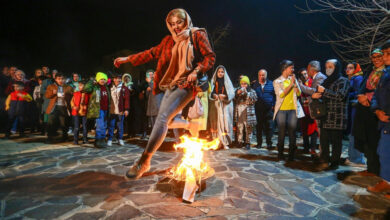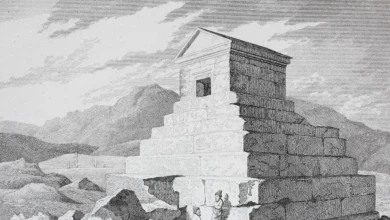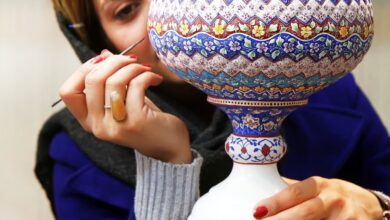Exploring Iranian Jewelry: Ancient to Modern Designs
Iranian Jewelry: A Timeless Fusion of Past and Present

Jewelry making in Iran boasts a rich and extensive history, dating back to the Achaemenid, Parthian, and Sasanian eras. This practical and industrial art form has flourished throughout ancient times, captivating the masses with its popularity. Exploring Iranian Jewelry from Ancient Treasure to Contemporary Designs is what we are going to check and digging up!
The art of jewelry making in Iran underwent significant changes following the Arab invasion. As tastes and cultures shifted, it evolved into a new form. Subsequently, with the advent of Islam in Iran, the art of jewelry making experienced further growth, marked by numerous alterations in designs and the manner in which jewelry was utilized. Today, it remains renowned as one of Iran’s distinguished artistic traditions on a global scale.
As the 20th century dawned, the gold industry in Iran underwent a transformation. The traditional attire of Iranians gradually gave way to European influences, leading to the emergence of a new style of jewelry. This style, which included Georgian, Victorian, and Edwardian designs, became popular in Iran. Additionally, the Pahlavi dynasty commissioned new royal decorations, such as crowns and robes, which are now preserved in the central bank as historical artifacts.
Contents
The History of Jewelry in Iran
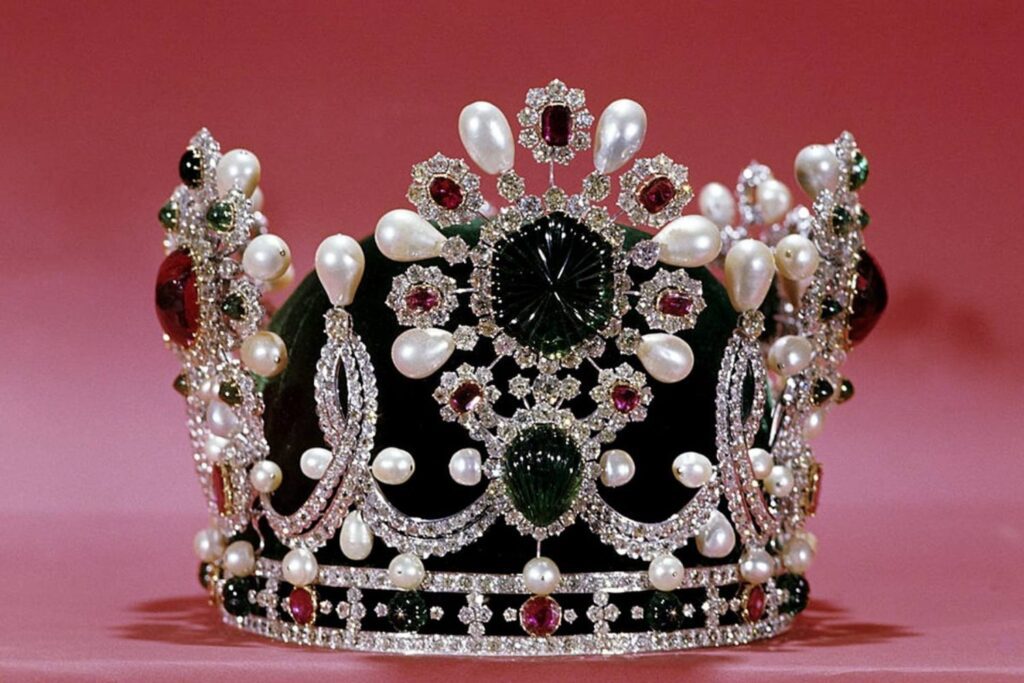
According to the results of archaeological excavations in Turang Tepe (تورنگ تپه), Din Khaneh (دین خانه), Hasanlu (حسنلو), Dillman (دیلمان), Gog Tepe (گوگ تپه) and Amlesh (املش), and the ornamental jewelry obtained, it confirms the existence of the jewelry industry in North of Iran.
The initial discovery of an Iranian gold bracelet, featuring a lion’s head design at its termination, was made in the Marlik hills. This particular artifact is associated with the Achaemenid era and possesses distinctive characteristics and craftsmanship.
The Story of Kooh – E Noor and Daryay – E Noor
When Nadershah – e Afshar is mentioned, the associations that typically arise before his military prowess and territorial conquests are the titles “Kooh – e Noor ” and ” Daryay – e Noor.” These two diamonds, regarded as sister gems, possess an intriguing tale.
Daryay – e Noor
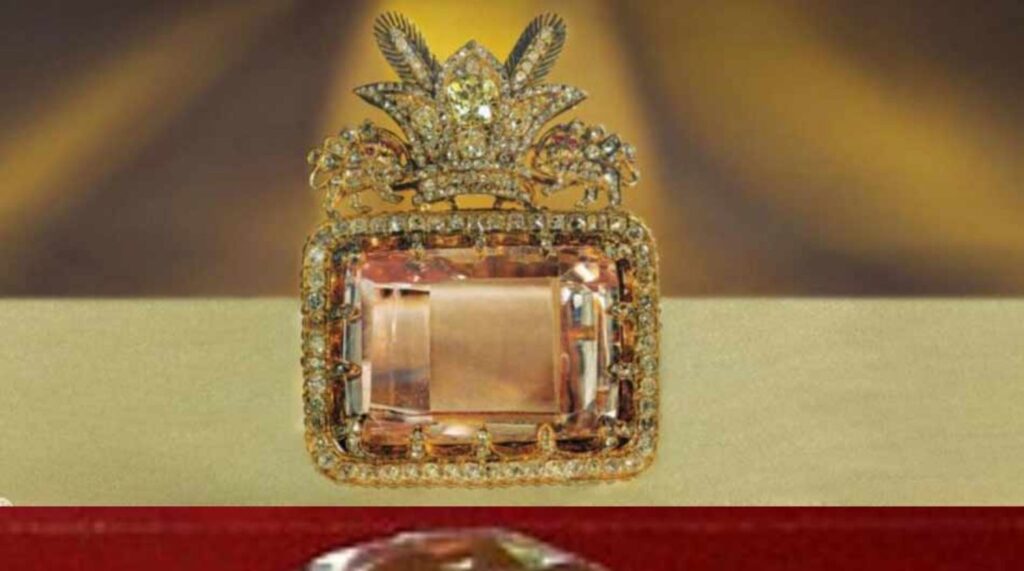
Daryay – e Noor, weighing 182 carats or 4.36 grams, is renowned as one of the largest diamonds globally and holds the distinction of being the largest pink diamond ever discovered. Its rich history is steeped in mythology and legends, with accounts suggesting that this remarkable gem was unearthed and extracted over a millennium ago.
The diamond’s color is exceptionally rare, making it one of the most unique among all known diamonds worldwide. Its value is of such magnitude that it was previously regarded as the foundation for Iran’s national currency, the “Rial.” Speculation suggests that this diamond, along with the Noor al-Ain diamond, originated from a single diamond that was subsequently divided into two separate pieces.
Daryay – e Noor, was in the possession of Nader Shah Afshar during the conflict with India in 1739 AD. Following Nader Shah’s assassination, the diamond was passed down to his grandson Shah Rukh Mirza, the final ruler of the Afshar dynasty. Subsequently, it came into the possession of Amir Alam Khan Khuzima, then Muhammad Hassan Khan Qajar, and later Lotf Ali Khan Zand. Ultimately, Daryay – e Noor ended up in the hands of Agha Mohammad Khan Qajar.
During the reign of Mohammad Ali Shah, after his defeat, the constitutionalists lost possession of this valuable gem, which was subsequently seized by the Russian embassy and later reclaimed by the constitutionalists.
Kooh – e Noor
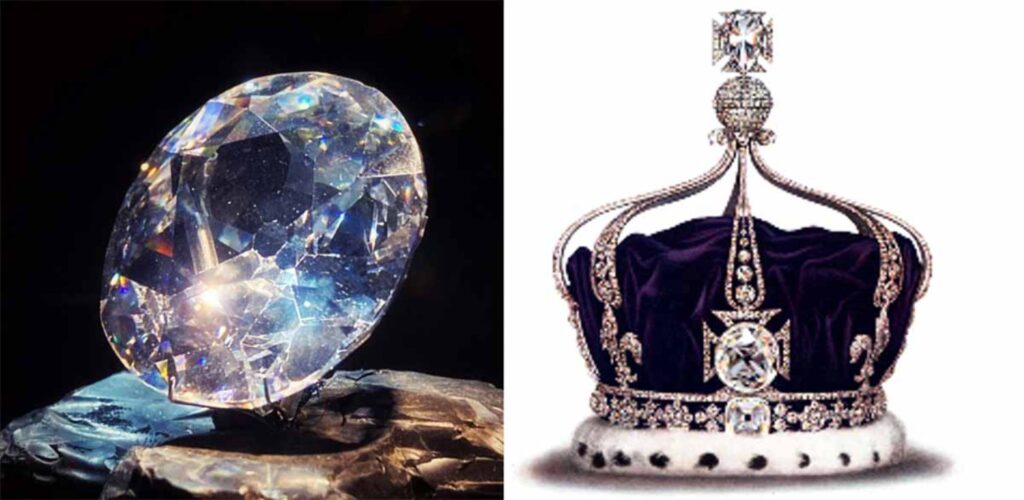
The “Kooh – e Noor” diamond, also known as the Mount of Light, was once the largest diamond in the world. It had a weight of 186.0625 carats, which is equivalent to 37.21 grams. However, the belief that this diamond is more than 5,000 years old remains a theory without substantial evidence to support it.
Kooh – e Noor, has been a subject of exchange between the rulers of India, Mongolia, Afghanistan, Iran, and Britain for several years. This precious gemstone was acquired from the ancient fort of Golkanda, located near Hyderabad in the state of Andhra Pradesh, India, in 1656. It was then gifted to Shah Jahan, the Gurkan king of India, by the renowned Iranian minister, Mirza Mohammad Mirjumla, and has remained in his possession ever since.
In 1739 AD, after conquering India, Nader Shah saw this diamond shining on the crown of Indian Mohammad Shah and said: “This is a mountain of light” and since then the name “Kooh – e Noor” remained on it. As a symbol of victory, Nader Shah brought this diamond, along with two additional diamonds, out of India.
Raw Materials in Jewelry Making
Jewelries, upon reaching the customer’s possession, are not solely crafted from gold. The production of exquisite jewelry involves the utilization of additional materials such as metal and non-metal objects.
Metals
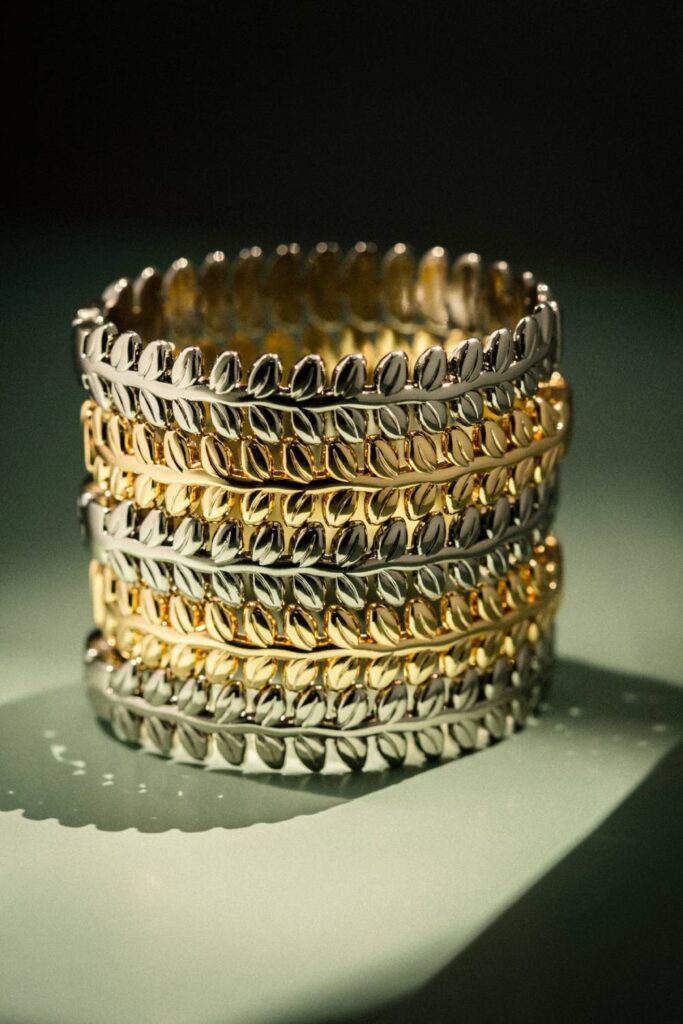
Metals possess exceptional qualities that make them the ideal choice for crafting jewelry. Their malleability, ability to be bent and twisted, durability, and above all, their inherent beauty, make them unparalleled in this field. It is worth noting that metals utilized in jewelry production are devoid of iron. Consequently, a diverse array of metals is deemed suitable for jewelry making, with selection based on factors such as color, weight, and price.
Non – Metals
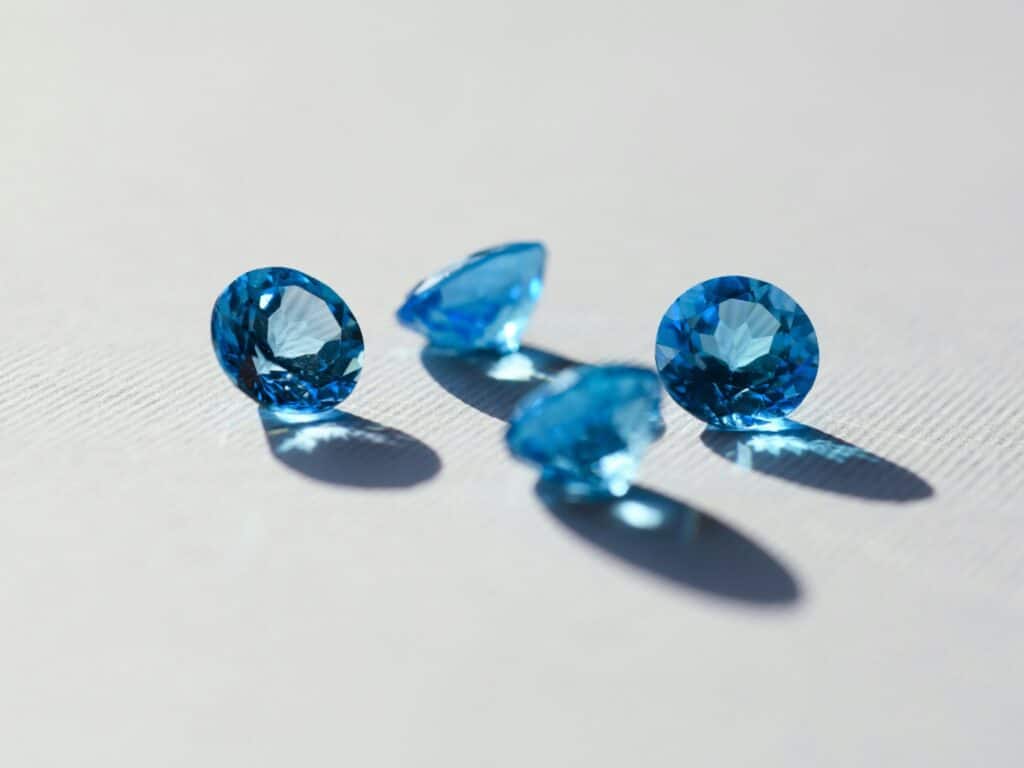
In the realm of jewelry making, the utilization of not only metals but also beads and stones is prevalent. The scope of decorative possibilities extends to encompass any aesthetically pleasing object. The incorporation of precious and semi-precious stones, beads, glass, and even diamonds into jewelry exemplifies this notion. The amalgamation of colored stones and the textural qualities of various materials with metals represents an exquisite artistry within the realm of jewelry making.
Exploring Iran, The Country of Art and History
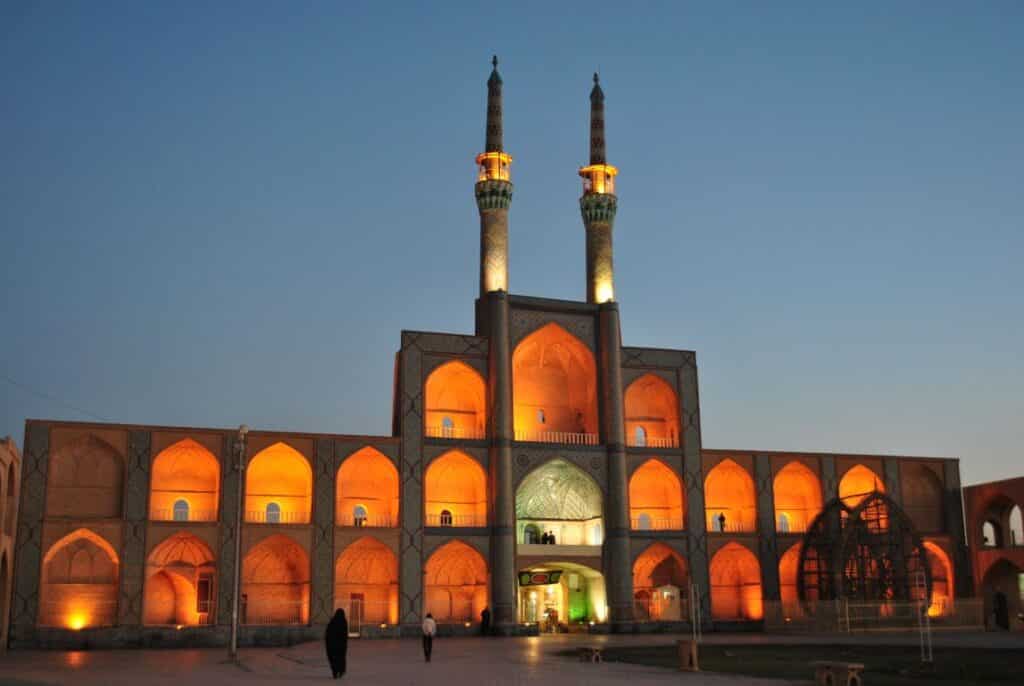
Jewelry industry in Iran at present

Over the years, the jewelry industry has established a prominent position in the global market. Numerous Iranian brands have gained recognition in Europe and other parts of the world. It is a source of great pride that the export of jewelry has brought significant value to the country. Iranian companies specialize in creating customized gold jewelry and exporting them to various countries.
Throughout history, Iran’s gold and jewelry industry has been adorned with numerous accolades, contrary to popular belief. The masterpieces crafted by skilled artisans and designers are a testament to the country’s leadership and influence in this field, inspiring other nations and cultures. It is our fervent desire that Iran’s jewelry industry continues to shine brightly, showcasing its unique and exceptional creations to the world for eternity.
